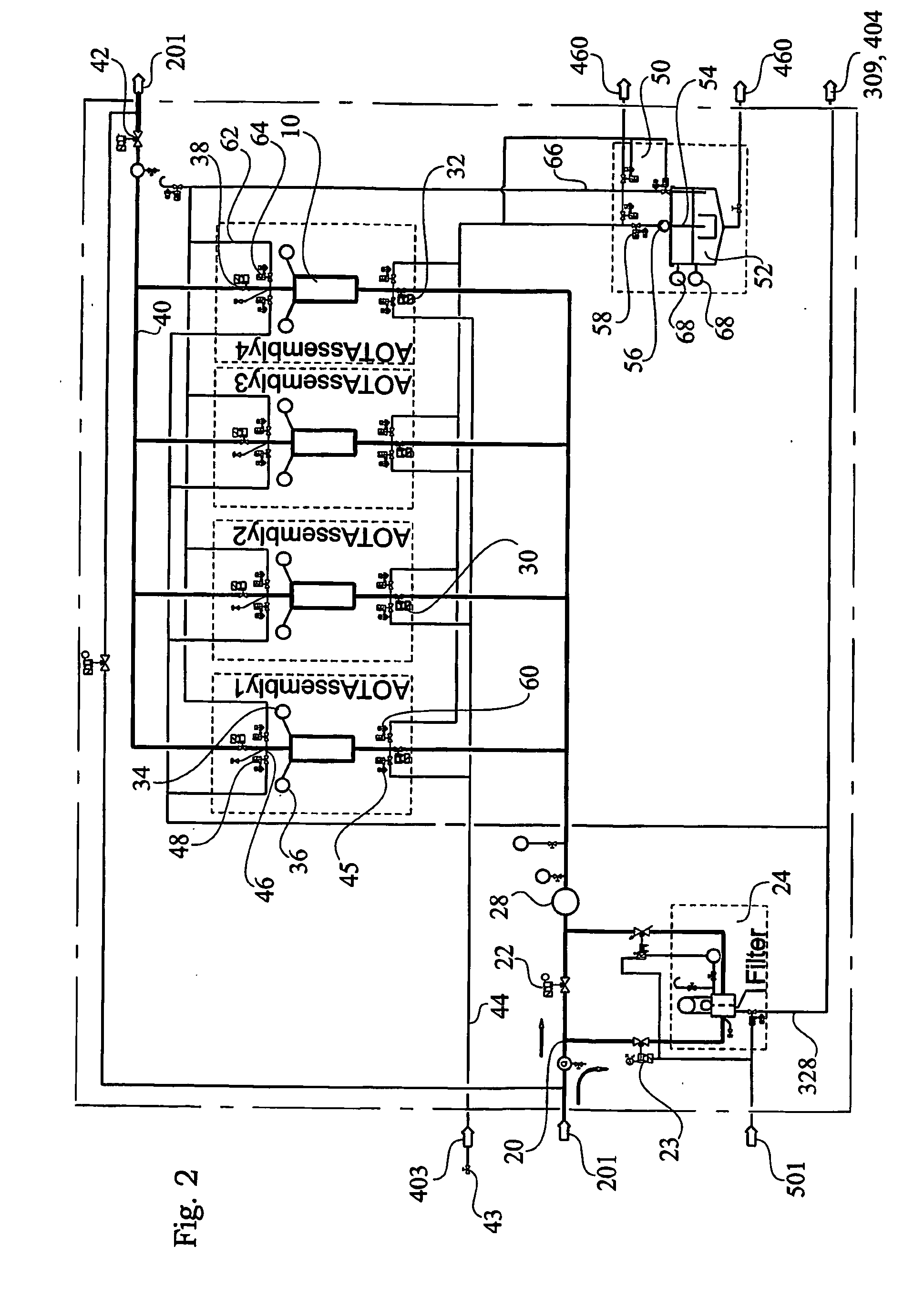System of water treatment
a water treatment system and water treatment technology, applied in the nature of treatment water, separation process, vessel construction, etc., can solve the problems of affecting the delicate biological balance of the sea, the inability to access clean and unpolluted water, and the limited fresh water supply in many areas of the world, so as to reduce the risk of having contaminated water remaining in the system
- Summary
- Abstract
- Description
- Claims
- Application Information
AI Technical Summary
Benefits of technology
Problems solved by technology
Method used
Image
Examples
Embodiment Construction
[0058]The present invention makes use of non-chemical containing technology for water. Figure one shows schematically a system for treating ballast water including liquid treating unit or reactor 10. The rest of the overall system comprises an inlet pipe 18, a filter 24, outlet pipe 40 and a cleaning unit 50.
[0059]The ballast water treatment system and its function according to the present invention will be described in more detail in connection with FIG. 2. The water intake to the main pipe 18 of the system both for ballasting and deballasting is denoted with arrow 201. A ballast water pump (not shown) controlled by the control system of the ship is arranged to the inlet for pumping water through the system. Adjacent the inlet a pipe branch is arranged 20 having a closing valve 23, where the main pipe after the branch in the flow direction is arranged with a main closing valve 22. The other branch leads to a filter arrangement 24 and then back to the main pipe via a closing valve 2...
PUM
| Property | Measurement | Unit |
|---|---|---|
| wavelengths | aaaaa | aaaaa |
| thickness | aaaaa | aaaaa |
| wavelengths | aaaaa | aaaaa |
Abstract
Description
Claims
Application Information
 Login to View More
Login to View More - R&D
- Intellectual Property
- Life Sciences
- Materials
- Tech Scout
- Unparalleled Data Quality
- Higher Quality Content
- 60% Fewer Hallucinations
Browse by: Latest US Patents, China's latest patents, Technical Efficacy Thesaurus, Application Domain, Technology Topic, Popular Technical Reports.
© 2025 PatSnap. All rights reserved.Legal|Privacy policy|Modern Slavery Act Transparency Statement|Sitemap|About US| Contact US: help@patsnap.com



